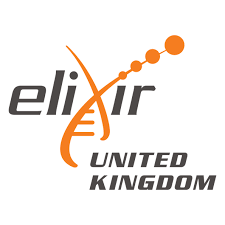GtoPdb is requesting financial support from commercial users. Please see our sustainability page for more information.
ClC family C
Unless otherwise stated all data on this page refer to the human proteins. Gene information is provided for human (Hs), mouse (Mm) and rat (Rn).
Overview
The mammalian ClC family (reviewed in [2,5-7,15]) contains 9 members that fall, on the basis of sequence homology, into three groups; ClC-1, ClC-2, hClC-Ka (rClC-K1) and hClC-Kb (rClC-K2); ClC-3 to ClC-5, and ClC-6 and -7. ClC-1 and ClC-2 are plasma membrane chloride channels. ClC-Ka and ClC-Kb are also plasma membrane channels (largely expressed in the kidney and inner ear) when associated with barttin (BSND, Q8WZ55), a 320 amino acid 2TM protein [9]. The localisation of the remaining members of the ClC family is likely to be predominantly intracellular in vivo, although they may traffic to the plasma membrane in overexpression systems. Numerous recent reports indicate that ClC-4, ClC-5, ClC-6 and ClC-7 (and by inference ClC-3) function as Cl-/H+ antiporters (secondary active transport), rather than classical Cl- channels [13,17,21,25,30]; reviewed in [2,28]). It has recently been reported that the activity of ClC-5 as a Cl-/H+ exchanger is important for renal endocytosis [22]. Alternative splicing increases the structural diversity within the ClC family. The crystal structure of two bacterial ClC proteins has been described [8] and a eukaryotic ClC transporter (CmCLC) has recently been described at 3.5 Å resolution [11]. Each ClC subunit, with a complex topology of 18 intramembrane segments, contributes a single pore to a dimeric ‘double-barrelled’ ClC channel that contains two independently gated pores, confirming the predictions of previous functional and structural investigations (reviewed in [5,7,15,28]). As found for ClC-4, ClC-5, ClC-6 and ClC-7, the prokaryotic ClC homologue (ClC-ec1) and CmCLC function as H+/Cl antiporters, rather than as ion channels [1,11]. The generation of monomers from dimeric ClC-ec1 has firmly established that each ClC subunit is a functional unit for transport and that cross-subunit interaction is not required for Cl-/H+ exchange in ClC transporters [29].
Channels and Subunits
698|
ClC-1 C Show summary »
|
||||||||||||||||||||||||||||
|
ClC-2
C
Show summary »
More detailed page |
||||||||||||||||||||||||||||
|
ClC-Ka C Show summary » |
||||||||||||||||||||||||||||
|
ClC-Kb C Show summary » |
||||||||||||||||||||||||||||
|
ClC-3 C Show summary » |
||||||||||||||||||||||||||||
|
ClC-4 C Show summary » |
||||||||||||||||||||||||||||
|
ClC-5 C Show summary » |
||||||||||||||||||||||||||||
|
ClC-6 C Show summary » |
||||||||||||||||||||||||||||
|
ClC-7 C Show summary » |
Comments
How to cite this family page
Database page citation:
ClC family. Accessed on 13/12/2025. IUPHAR/BPS Guide to PHARMACOLOGY, http://www.guidetopharmacology.org/GRAC/FamilyDisplayForward?familyId=128.
Concise Guide to PHARMACOLOGY citation:
Alexander SPH, Mathie AA, Peters JA, Veale EL, Striessnig J, Kelly E, Armstrong JF, Faccenda E, Harding SD, Davies JA et al. (2023) The Concise Guide to PHARMACOLOGY 2023/24: Ion channels. Br J Pharmacol. 180 Suppl 2:S145-S222.








ClC channels display the permeability sequence Cl- > Br- > I- (at physiological pH). ClC-1 has significant opening probability at resting membrane potential, accounting for 75% of the membrane conductance at rest in skeletal muscle, and is important for stabilization of the membrane potential. S-(-)CPP, 9-anthroic acid and niflumic acid act intracellularly and exhibit a strongly voltage-dependent block with strong inhibition at negative voltages and relief of block at depolarized potentials ([18] and reviewed in [27]). Inhibition of ClC-2 by the peptide GaTx2, from Leiurus quinquestriatus herbareus venom, is likely to occur through inhibition of channel gating, rather than direct open channel blockade [35]. Although ClC-2 can be activated by cell swelling, it does not correspond to the VRAC channel (see below). Alternative potential physiological functions for ClC-2 are reviewed in [26]. Functional expression of human ClC-Ka and ClC-Kb requires the presence of barttin [9,31] reviewed in [10]. The properties of ClC-Ka/barttin and ClC-Kb/barttin tabulated are those observed in mammalian expression systems: in oocytes the channels display time- and voltage-dependent gating. The rodent homologue (ClC-K1) of ClC-Ka demonstrates limited expression as a homomer, but its function is enhanced by barttin which increases both channel opening probablility in the physiological range of potentials [9,12,31] reviewed in [10]). ClC-Ka is approximately 5 to 6-fold more sensitive to block by 3-phenyl-CPP and DIDS than ClC-Kb, while newly synthesized benzofuran derivatives showed the same blocking affinity (<10 µM) on both CLC-K isoforms [19]. The biophysical and pharmacological properties of ClC-3, and the relationship of the protein to the endogenous volume-regulated anion channel(s) VRAC [3,14] are controversial and further complicated by the possibility that ClC-3 may function as both a Cl-/H+ exchanger and an ion channel [3,25,36]. The functional properties tabulated are those most consistent with the close structural relationship between ClC-3, ClC-4 and ClC-5. Activation of heterologously expressed ClC-3 by cell swelling in response to hypotonic solutions is disputed, as are many other aspects of its regulation. Dependent upon the predominant extracellular anion (e.g. SCN- versus Cl-), CIC-4 can operate in two transport modes: a slippage mode in which behaves as an ion channel and an exchanger mode in which unitary transport rate is 10-fold lower [4]. Similar findings have been made for ClC-5 [37]. ClC-7 associates with a β subunit, Ostm1, which increases the stability of the former [16] and is essential for its function [17].